Table of contents
Soy milk is a good substitute for cow's milk, especially from organic farming. Commercially available vanilla-flavored soy milk contains sugar and is always heated, so never raw.
Use in the kitchen
Soy milk or soy drinks are used as a substitute for cow's milk in vegetarian and vegan preparations, or for people who are lactose intolerant. Similar to rice milk, oat milk, hazelnut milk or almond milk. In addition , soy milk (natural) is also used to make soy cream, soy yoghurt or tofu.
There are countless recipes that use soy milk. Soy milk with a flavor, such as vanilla, is particularly suitable for desserts and as an ingredient in drinks such as tea (chai), smoothies and milkshakes, to which it gives a creamy, nutty, typical soy milk flavor.
Soy milk with vanilla is ideal for baking cakes, muffins, cookies, pancakes, vegan Kaiserschmarrn, waffles and other baked goods. The classic use is of course as a milk substitute in muesli (e.g. for a vegan quinoa nut muesli). It serves as a base for puddings, creams, ice cream and other sweet treats.
In sauces for desserts, such as béchamel, soy milk (with vanilla) gives a pleasant creaminess. Whether you want to refine savory dishes, casseroles, quiches and soups with the sweetened plant-based cow's milk alternative, it is definitely worth a try.
Can you cook soy milk? Soy milk can be enjoyed both cold and hot, but it is never raw!
Homemade preparation
What is soy milk made of and how is soy milk made? Basically, soy milk only consists of soy beans and water. However, there are various recipes with various ingredients. Soy milk can also be easily prepared at home:
Ingredients (for approx. 1 L of milk): 1 L of drinking water, 100 g of dried soybeans (organic). You can choose the ratio of water to beans yourself - but we recommend at least 100 g of dried soybeans per liter of water.
Preparation: Soak dried soybeans overnight.
Preparation: Puree the soaked soybeans with the selected amount of water to form the finest possible mass. Separate all solid components using a suitable filter (linen/strain cloth, nut milk bag, etc.). The pomace, which is also known as okara, has many uses in the kitchen, e.g. as a tasteless dough component in baked goods or as an ingredient in soups and stews. Transfer the raw soy milk obtained into a pot and heat slowly at first, then simmer for 15-20 minutes, stirring regularly. This removes toxins that inhibit digestion (trypsin inhibitors) and makes the soy milk edible. The foaming caused by the denaturing proteins is natural and subsides during the cooking process. Once ready, the soy milk can be refined as desired.
Flavor refinements: If necessary, you can sweeten the milk. Dried fruit, such as dates or a calorie-free version with stevia, are ideal for this. You can also sweeten with agave syrup, maple syrup or raw sugar. Remember that a high fructose content can have a negative effect on your health. 11 The pulp of vanilla beans,ground vanilla or vanilla extract are ideal for refining the flavor to your own taste.
Vegan recipe with soy milk: vanilla pudding
Ingredients (for 4 servings): 3 tablespoons corn starch, a pinch of salt, 500 ml soy vanilla milk, 50 ml soy cream, 2 tablespoons coconut blossom sugar (if the soy milk is unsweetened).
To garnish: fresh blackberries.
Preparation: Mix the cornstarch, salt and about 6 tablespoons of the milk with a whisk to form a homogenous, viscous mass. Bring the remaining milk to the boil and stir in the cornstarch mixture. Stir until the typical pudding cream is formed. Pour the pudding into small bowls, allow to cool and enjoy garnished with fresh blackberries.
Vegan recipe for 'Golden Milk'
Ingredients (for 1 serving): 1 cup vanilla soy milk, 1 teaspoon ground turmeric, 1⁄2 teaspoon ground cinnamon, 1⁄4 teaspoon ground ginger, a pinch ofblack pepper (improves the absorption of curcumin, the bioactive component in turmeric 12), 1-2 teaspoons honey or maple syrup (if the milk is unsweetened).
Method: In a small saucepan, heat the soy milk over medium heat until it reaches a gentle simmer. Add the ground turmeric, cinnamon, ginger and black pepper. Stir well and simmer the mixture for a further 5 minutes, stirring occasionally to prevent lumps. Pour the golden milk into a cup and add the desired sweetener to taste.
Vegan recipes with vanilla soy milk can be found under the note: " Recipes that have the most of this ingredient ".
| Not only vegans or vegetarians should read this: Vegans often eat unhealthily. Avoidable nutritional mistakes. |
Purchasing - Storage
Soya milk with flavors (e.g. vanilla) can be found all year round in supermarkets ( Coop, Migros, Denner, Volg, Spar, Aldi, Lidl, Rewe, Edeka, Hofer, Billa). In organic supermarkets (e.g. Denn's Biomarkt or Alnatura), health food stores and online retailers, the selection of different organic varieties is larger.
The availability of vanilla-flavored soy milk varies depending on the size of the store, catchment area, etc. You can find our recorded food prices for the DA-CH countries above under the ingredient image - and by clicking you can see their development at various suppliers.
Storage tips
Unopened, ultra-heat-treated flavored soy milk usually lasts up to a year. Opened soy milk can be kept in the refrigerator for 3-4 days, similar to cow's milk and other plant-based drinks. This also applies to homemade soy milk with or without flavor.
Ingredients - Nutritional values - Calories
Commercially available flavored soy milk has a soybean content of 7.2-13% 19, so the protein content of 3.3 g/100ml is comparable to that of cow's milk. 7 With a fat content of 1.8 g/100g, soy milk is lower than that of cow's milk. Soy milk with vanilla flavor contains 6.3 g/100g carbohydrates, of which 4 g are sugar. The calorie content of 54 kcal/100g is slightly higher than that of soy milk without additives (41 kcal/100g). 1
In comparison with cow's milk, it must be emphasized that soy milk does not contain vitamin B 12. 1 However, there is soy milk enriched with mineral or organic sources (e.g. with vitamin B12 and calcium). You can read more about the "B12 problem" in our article Vegans often eat unhealthily. Avoidable nutritional errors.
The variants enriched with different flavors range from banana ( banana powder) to chocolate ( cocoa powder) to vanilla (vanilla powder). The ingredient composition changes depending on the additives. For example, the addition of vanilla extract, which consists of 15-20% sugar, leads to a slight increase in the carbohydrate content of the soy milk, while variants based on vanillin or vanilla pods have less of an effect on the calorie content.
The amino acid tryptophan is found in the highest quantities in soy milk at 0.04 g/100g and accounts for 15% of the daily requirement. The content in coconut blossom sugar is comparable. Soy granules have even more of this amino acid at 0.62 g/100g. 1
Along with lysine, threonine is considered a truly essential amino acid because the body cannot produce it itself. The amount in soy milk is 0.11 g/100g (12% of the daily requirement) and is comparable to coconut cream. Here too, soy granules contain significantly more at 2.1 g/100g. 1
In addition, manganese is well represented in soy milk with 0.22 mg/100g and covers 11% of the daily requirement. Soy yoghurt also contains a similar amount. Coconut milk has higher values at 0.92 mg/100g. 1
Soy products contain many secondary plant substances (phytohormones), including isoflavones, saponins, phytic acid.
The complete ingredients of soy milk, the coverage of the daily requirement and comparison values with other ingredients can be found in our nutrient tables. In the article Nutrients explained you will get a detailed insight into the topic.
Effects on health
Is soy milk healthy? From a nutritional point of view, soy milk is the best alternative to cow's milk. 3 A comparison of various plant-based drinks with cow's milk showed that soy milk has a similar protein content to cow's milk. The proteins in soy milk are therefore considered to be complete proteins. 7 Soy milk contains all the essential amino acids that are necessary for human nutrition. 13
What is soy milk good for? There are also reports that the consumption of soy drinks is significantly associated with a lower risk of developing type 2 diabetes. Soy proteins may have positive effects on insulin resistance and obesity. The researchers of the underlying review study conclude that soy milk is a good alternative to cow's milk and can help regulate blood sugar levels, with various mechanisms playing a role. 4
Soybeans are rich in carbohydrates, proteins and lipids. They contain significant amounts of polyunsaturated fatty acids such as linoleic acid (18:2) and alpha-linolenic acid (18:3), have no cholesterol or lactose and a considerable content of vitamins and minerals. 7 Soy products are rich in phytochemicals such as isoflavones, saponins, phytic acid, trypsin inhibitors, phytosterols, phenolic acids and lectins. 7
As important bioactive compounds in soy products, isoflavones play a role as phytoestrogens in the human body and may be effective in promoting bone health (acts against osteoporosis), reducing the risk of various cancers (including prostate cancer) and cardiovascular disease (lowering cholesterol levels), and reducing the symptoms of diabetes. 7,17 However, isoflavones show a complex interaction in the endocrine (hormone) system and long-term effects of a soy-based diet in early childhood are unknown. 7
Soy isoflavones have significant antioxidant activity, such as scavenging free radicals and inhibiting lipid oxidation. In addition to isoflavones, other natural components in soy products, such as gallic acid, 4-hydroxybenzoic acid, p-coumaric acid, ferulic acid, sinapic acid, hesperidin, naringenin, rutin, quercetin and catechin, are also involved in their antioxidant activity. The total phenol content of freeze-dried raw soy milk was investigated in relation to specific soybean varieties. The varieties tested had an antioxidant capacity between 3.94 and 5.52 mg GAE/g. 17 For comparison: in one study, the apples examined had approximately 2 mg GAE/g FW. 18
The disadvantages are a lower content of micronutrients, as well as the antinutrients phytic acid, trypsin inhibitors and inositol phosphates. Antinutrients can interfere with the absorption of some nutrients. Inositol phosphates bind cations such as calcium, zinc, magnesium and iron, thereby reducing their bioavailability, and trypsin inhibitors reduce the digestibility of proteins. Such antinutrients can be reduced by fermentation, germination, chelating agents, exogenous phytase or exposure to heat. 7
Is vanilla milk healthy? Real vanilla can be very healthy. You can find more information about this under the ingredient vanilla pod. The combination of vanilla with a high-quality (ideally organically produced) soy milk is generally healthy if no sugar is added.
Dangers - Intolerances - Side effects
Soy contains one of the eight most common food allergens. One problem with soy consumption is the frequency of allergies, as it contains 15 proteins that can cause allergies. 14% of people who suffer from a cow's milk allergy also show allergic reactions to soy. 7
Vanilla-like flavors can be produced from various raw materials. Vanillin, the main flavoring agent in vanilla, is obtained from various plants, wood, and even from the anal gland secretion of beavers. These vanilla-like substances can also be unhealthy. For example, the production of vanillin from tonka beans has been banned because the substances it contains can damage the liver. 2
Ecological footprint - animal welfare
Diets with fewer animal proteins and more environmentally friendly plant-based foods can provide a sufficiently balanced nutrient composition. However, this is not always an efficient and comprehensive way to reduce the negative impact on the environment or improve human well-being. The economic accessibility and nutritional content of plant-based products must be ensured. At the same time, the resilience of the agri-food sector must be supported. Soy milk has a lower carbon footprint, but is on average more expensive than cow's milk and contains fewer nutrients. 6 A life cycle analysis also showed that although soy milk has fewer negative effects on the environment, when energy and protein content are taken into account, this value approaches that of cow's milk. 15
Researchers estimated a greenhouse potential (GWP, Global Warming Potential) of 7.10 kg CO 2 eq/capita/day for an average European diet. Based on the results of a life cycle analysis, a daily consumption of one glass (0.25 kg) of organic soy drink instead of conventional milk could save 0.25 kg CO 2 eq/capita/day. This figure only gives an idea of the ecological consequences. Soy milk can have very different recipes/production methods and thus have different effects on the environment. 15
Land use changes and production methods can have serious impacts on the environment (loss of biodiversity). Organic soy milk generally performs better than conventionally produced soy milk. 15
Cow's milk has an average CO 2 footprint of 1.052 kg CO 2 eq/L; soy milk 0.525 kg CO 2 eq/L. 6 Oat milk is somewhat more environmentally friendly, with 0.3 kg CO 2 eq/kg. 14
The water consumption of 1 litre of soy milk (produced in Belgium) is 297 litres; that of 1 litre of cow's milk is 1050 litres. 5
Read more about soy milk.
Worldwide occurrence - cultivation
The soybean is one of the most important agricultural crops. 8 It has the highest protein content and the highest gross yield of vegetable oil among the crops grown worldwide. 9
The origin of soybean cultivation lies in China. China was the world's largest soy producer and exporter during the first half of the 20th century. In the 1950s, soy production in the USA developed rapidly and is now the country with the largest soy production in the world. Brazil is in second place, followed by Argentina. 9
Industrial production
Soy milk is made from soybeans, with or without shells, soy protein isolates or spray-dried soy milk powder. In general, the industrial production process differs from home preparation, in upstream or downstream processes - the core process is the same. Soaked beans are ground with water to create an emulsion. The emulsion is boiled for 20 minutes. Then additives such as sugar or salt are added. To ensure shelf life and stability, the soy milk is homogenized or emulsified. This ensures that the oil content (soybean oil) is evenly distributed in the water-based liquid. 9
Further information
Soy contains naturally occurring compounds called phytoestrogens, particularly isoflavones. These plant compounds have a similar chemical structure to the hormone estrogen. Some studies suggest that moderate consumption of soy may have potential health benefits, especially for women in managing menopausal symptoms and reducing the risk of certain hormone-related cancers. However, soy is so common in our diets that negative effects of its hormonal action cannot be ruled out. 16 Traditional preparation of soy milk is preferable to industrial preparation. Slow production, meaning sufficient soaking and cooking time, reduces the isoflavone content. 10 For even more information on soy products, see the ingredients: tofu, soybeans ( cooked or raw), tempeh, edamame, miso or soy granules.
Alternative names
Soy milk is also called soy drink. In English it is called 'soy milk' or 'soya milk'.
Bibliography - 19 Sources
| 1. | US-Amerikanische Nährwertdatenbank USDA. 2019. |
| 2. | Abreu-Runkel R. Vanilla: A Global History [E-Book]. London: Reaktion Books Ltd; 2020. |
| 3. | Vanga SK, Raghavan V. How well do plant based alternatives fare nutritionally compared to cow’s milk? J Food Sci Technol. Januar 2018;55(1):10–20. |
| 4. | Sun L, Tan KWJ, Siow PC, Henry CJ. Soya milk exerts different effects on plasma amino acid responses and incretin hormone secretion compared with cows’ milk in healthy, young men. Br J Nutr. 14. Oktober 2016;116(7):1216–21. |
| 5. | Ercin AE, Aldaya MM, Hoekstra AY. The water footprint of soy milk and soy burger and equivalent animal products. Ecological Indicators. Juli 2012;18:392–402. |
| 6. | Coluccia B, Agnusdei GP, De Leo F, Vecchio Y, La Fata CM, Miglietta PP. Assessing the carbon footprint across the supply chain: Cow milk vs soy drink. Science of The Total Environment. Februar 2022;806:151200. |
| 7. | Silva ARA, Silva MMN, Ribeiro BD. Health issues and technological aspects of plant-based alternative milk. Food Research International. Mai 2020;131:108972. |
| 8. | Pagano MC, Miransari M. The importance of soybean production worldwide. Abiotic and Biotic Stresses in Soybean Production. Elsevier; 2016:1–26. |
| 9. | Singh G (Hrsg).The Soybean: Botany, Production and Uses. Vereinigtes Königreich: CABI; 2010. |
| 10. | Bennetau-Pelissero C. Positive or negative effects of isoflavones: Toward the end of a controversy. Food Chemistry. Juni 2017;225:293–301. |
| 11. | Ozuna C, Franco-Robles E. Agave syrup: An alternative to conventional sweeteners? A review of its current technological applications and health effects. LWT. Juni 2022;162:113434. |
| 12. | Turmeric supplementation with piperine is more effective than turmeric alone in attenuating oxidative stress and inflammation in hemodialysis patients: A randomized, double-blind clinical trial. Free Radical Biology and Medicine. 20. November 2022;193:648–55. |
| 13. | Hoffman JR, Falvo MJ. Protein – which is best? J Sports Sci Med. 1. September 2004;3(3):118–30. |
| 14. | Reinhardt G, Gärtner S, Wagner T. Ökologische Fussabdrücke von Lebensmitteln und Gerichten in Deutschland. Institut für Energie - und Umweltforschung Heidelberg. 2020 |
| 15. | Geburt K, Albrecht EH, Pointke M, Pawelzik E, Gerken M, Traulsen I. A comparative analysis of plant-based milk alternatives part 2: environmental impacts. Sustainability. Januar 2022;14(14):8424. |
| 16. | Bundesinstitut für Risikobewertung (BfR). Sojahaltige Lebensmittel und Nahrungsergänzungsmittel: Gesundheitliche Aspekte. 2023. |
| 17. | Ma Y, Huang H. Characterisation and comparison of phenols, flavonoids and isoflavones of soymilk and their correlations with antioxidant activity. Int J of Food Sci Tech. Oktober 2014;49(10):2290–8. |
| 18. | Henríquez C, Almonacid S, Chiffelle I, Valenzuela T, Araya M, Cabezas L, u. a. Determination of antioxidant capacity, total phenolic content and mineral composition of different fruit tissue of five apple cultivars grown in chile. Chilean J Agric Res. Dezember 2010;70(4):523–36. |
| 19. | Olías R, Delgado-Andrade C, Padial M, Marín-Manzano MC, Clemente A. An updated review of soy-derived beverages: nutrition, processing, and bioactivity. Foods. 11. Juli 2023;12(14):2665. |

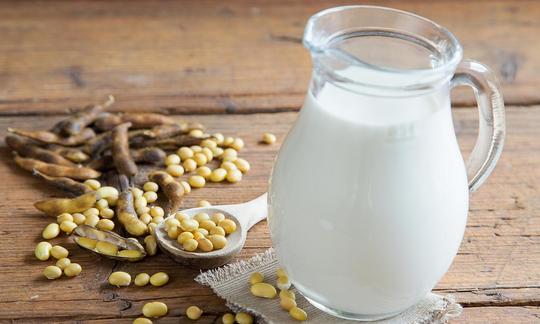

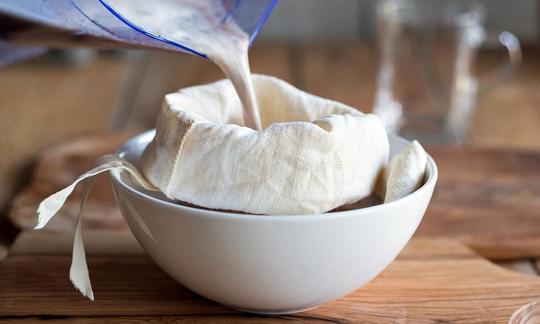

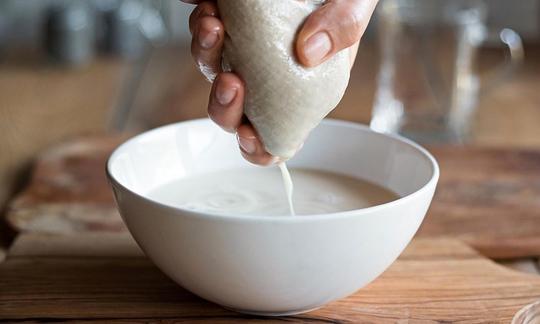

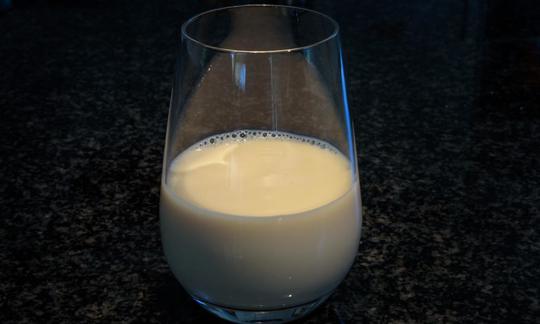

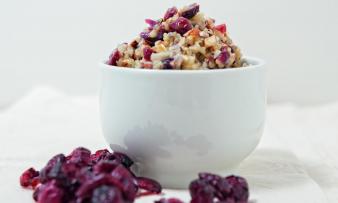
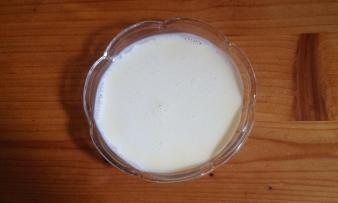
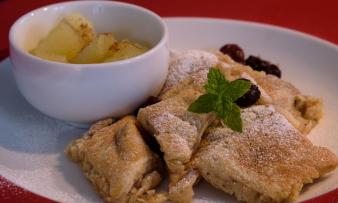


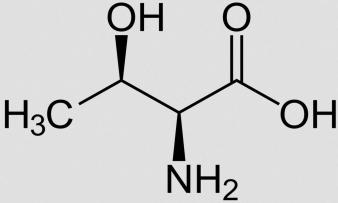


Comments